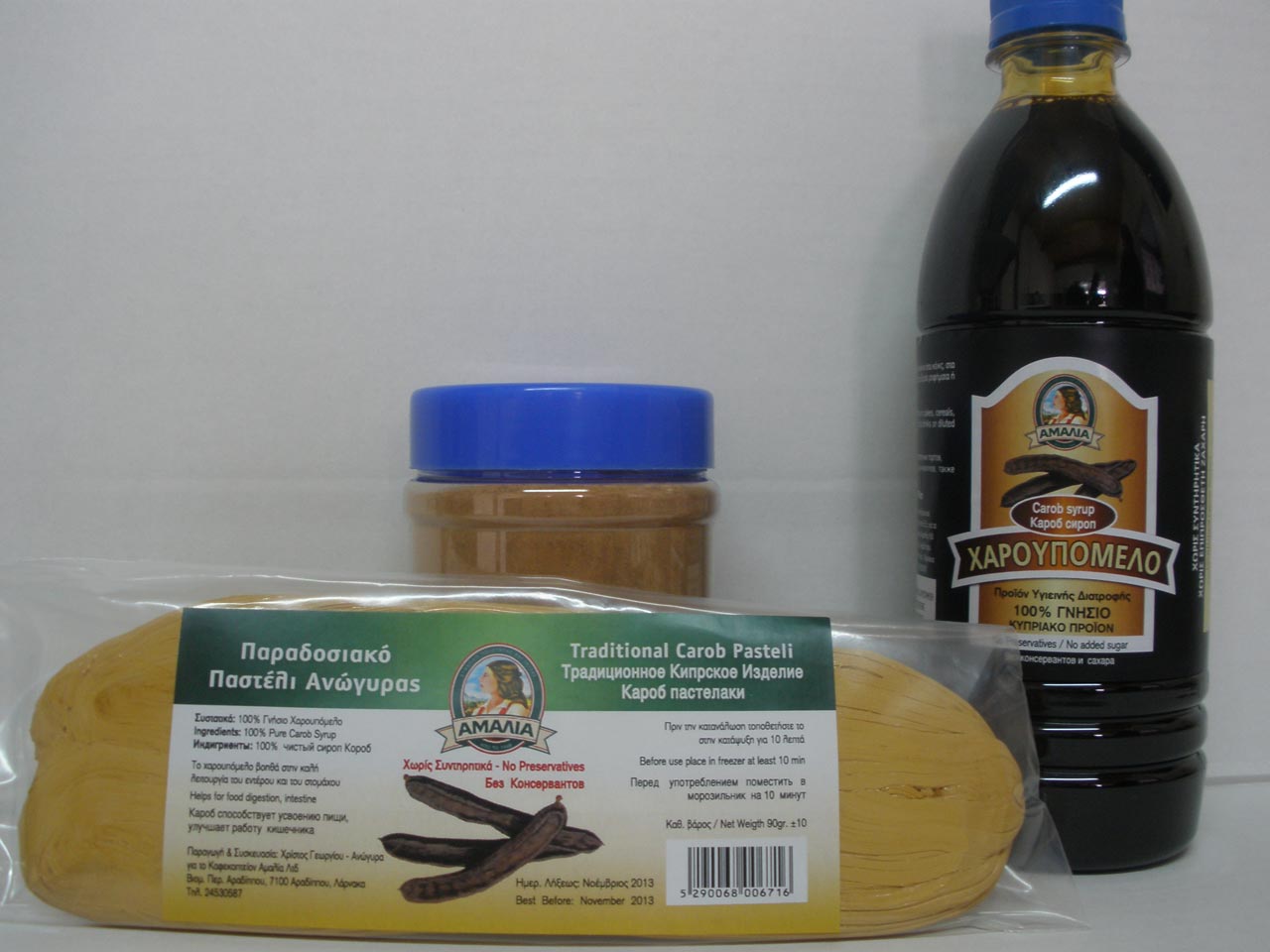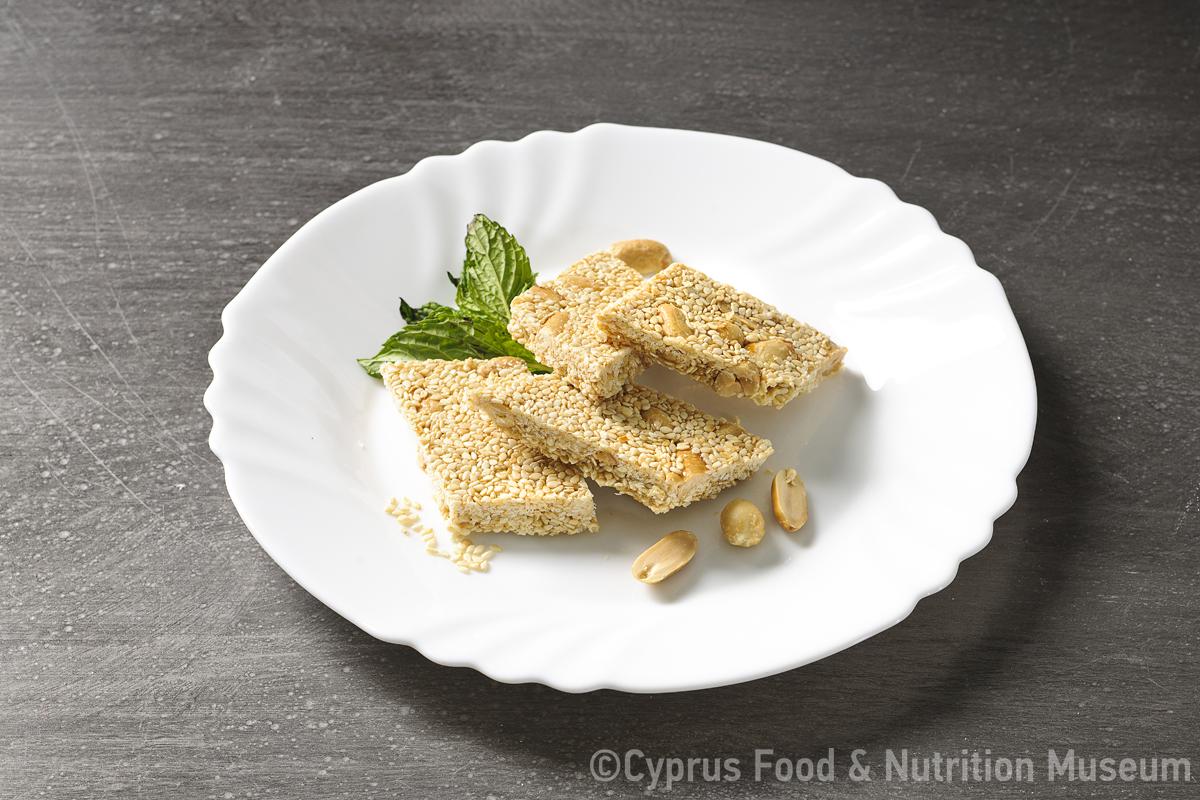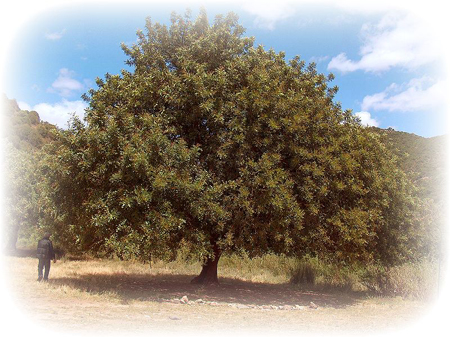Name - Origin
It is a sweet from carob syrup (Yangoullis 2009, entry παστέλλιν,το, 347), which is boiled until a solid mass is formed (Kypri 1983 [2003²], entry παστέλλιν,το, 30).
Eugenia Petrou-Poeitou notes that it is a sweet made of sesame seeds and shaped like a stick (Petrou-Poeitou 2013, entry Παστέλι, 111).
George Loukas in his Glossary describes it as a red sweet, with a consistency like dough, made of carob syrup (Kypri 1979 [2002²], entry παστέλλιν,το, 361-362).
ETYM. < old Italian pastello (Yangoullis 2009, entry παστέλλιν,το, 347) [pastello = the pencil] (Petrou-Poeitou 2013, entry Παστέλι, 111)
As the folklorist Nearchos Clerides mentions, the word pasteli comes from the French word pastel, which was adopted in the Cypriot vocabulary during the years of the rule of the Francs as "pastelin" (Sophocleous 2004, 200).
George Loukas mentions that pastellin has its root in the Italian word pasta ∙pastigla - pastry with which it resembles; according to the dictionary of Souidas, pastili, skin scraping, is related to the word pastina, hence, the Cypriot word πόπαστον - popaston (Kypri 1979 [2002²], entry παστέλλιν,το, 361-362).
Latin pastillus, french pastillage, english pastel, pastille (Kypri 1989, entry παστέλλιν,το, 43), t/c pasdelli (Yangoullis 2009, entry παστέλλιν,το, 347)
They would produce carob syrup from carobs and after processing it at high temperature they would make pastelli (Hadjikostas 1994, 113).
"Pasteli is basically made during the months from September to May, because if the weather is hot pastelli cannot be easily moulded. For the production of pastelli, large and thick carobs are chosen as they contain more sugar. After they are washed and dried, they are ground in the traditional mill and then put in traditional weaved baskets and often sprinkled with water for about 20-24 hours. They place the baskets on a sloping board and the carob juice, which is called 'sierepetti', drips from these baskets and is collected in large containers. The women then pour the sherepetti into a large copper pot called "harjín", which they place over the fire. They stir every now and then with a wooden spoon for 6-7 hours until it thickens and becomes carob syrup. They transfer a small quantity of carob syrup to another "hartzin" and place it over the fire. They stir it constantly for about 4 hours until it thickens and becomes a dark amorphous mass. They transfer it on a slab and wait for it to cool for a while. Then, they take a quantity of 1-2 kg at a time and place it over a wooden stake on the wall and a woman begins to pull it with skill. She stretches it, braids it, pulls it again until it becomes blond in color and becomes like gold. Finally, it is placed in small basins, cut into pieces and left to dry out” (Apostolidou-Orphanidou 1991, 98).
Functional and symbolic role
Pastellin was a common sweet, usually sold at fairs by pastellades (Apostolidou-Orfanidou 1991, 98). Pastellin was considered "the best and the most harmless medicine for constipation" (Christodoulides 1994, 64).
Additional information and bibliography
The pastellin which was made in the village of Kazafani, in Kyrenia district ("Kazafani pastellin") was well known throughout Cyprus ( Hadjikostas 1994, 113).
There is a speculation that in the village of Anogyra, the pasteli making method was taught to the inhabitants by the Franks while they were in command of the village (1192-1489 AD).
In the occupied village of Bellapais, in Kyrenia district, the art of making honey and pasteli from carob trees existed for ages. 'Thousands of carob trees existed in the area and it was difficult to sell all the carobs [...] the villagers would make carob syrup and pastelli and sell it themselves, either at fairs or to resellers. The process of making pastelli is long, complex and very laborious. But it was also quite profitable compared to other activities. At the beginning of the 20th century, there were 3 carob mills operating in the village, all around the same neighbourhood: the one of Tillyros, the one of Savvas Hattinos and the one of Katyshis. In other words, more than 20 family members were engaged in the production of carob syrup and pastelli. From 1940 onwards, there was only one operating mill, that of Katyshis. It should be noted that pastelli is only made between November and April as low temperatures are necessary in order for carob syrup to curdle and become pastelli. The festivals of Agia Mavra (3 May) in Koilani, in Limassol district and Agia Irini (5 May) in Farmakas village, in Nicosia district, were the last festivals of the season when pastelli makers would sell their product. [...] [...] throughout the winter months, there was a delicious smell all over the village, as pastelli was produced on a daily basis. Many visitors of the village were very keen on seeing with their own eyes where such a pleasant smell was coming from' (Christodoulides 1994, 62-64).
In a 1900 manual, written by the then Director of the Department of Agriculture, it is stated that 15 okas of carobs produce about eight okas of carob syrup and about six okas of pastellin. The method of production of carob syrup and pastellin is also described: 'Carobs are ground using a hand mill and the carob flour is placed in a basket over a boiler to obtain the syrup. The flour is ‘washed’ by pouring cold water over it until all the sugar is dissolved and carried away. The water is collected in the boiler and evaporated due to the heat until the remaining liquid reaches the consistency of ‘honey’ and a deep brown colour. By prolonging the evaporation and by stirring the liquid continuously, the so-called pastellin is obtained' (Gennadios 1900, 15).
Apostolidou-Orphanidou E. (1991), «Το παστέλλιν της Ανώγυρας», Λαογραφική Κύπρος (Folklore Cyprus) 21,41, 95-99.
Gennadios P. G. (1900), Περί κερατέας, 'Kypriou' press, Nicosia.
Yangoullis K. G. (2009), Θησαυρός Κυπριακής Διαλέκτου. Ερμηνευτικό, Ετυμολογικό, Φρασεολογικό και Ονοματολογικό Λεξικό της Μεσαιωνικής και Νεότερης Κυπριακής Διαλέκτου, Βιβλιοθήκη Κυπρίων Λαϊκών Ποιητών, 70, Theopress Publications, Nicosia.
Kypri Th. D. (ed.) (1979 [2002²]), Υλικά διά την σύνταξιν ιστορικού λεξικού της κυπριακής διαλέκτου, Μέρος Α΄, Γλωσσάριον Γεωργίου Λουκά, Publications of the Centre for Scientific Research, XLI, Nicosia.
Kypri Th. D. (ed.) (1983 [2003²]), Υλικά διά την σύνταξιν ιστορικού λεξικού της κυπριακής διαλέκτου, Μέρος Β΄, Γλωσσάριον Ξενοφώντος Π. Φαρμακίδου, Publications of the Centre for Scientific Research, IX, Nicosia.
Kypri Th. D. (ed.) (1989), Υλικά διά την σύνταξιν ιστορικού λεξικού της κυπριακής διαλέκτου, Μέρος Γ΄, Γλωσσάριον Ιωάννου Ερωτοκρίτου, Publications of the Centre for Scientific Research, XIV, Nicosia.
Petrou-Poeitou E. (2013), Από πού κρατάει η σκούφια τους. Λέξεις και ιστορίες από τον κόσμο της γεύσης, Epiphaniou Publications, Nicosia.
Hadjikostas L. (1994), «Η χαρουπιά στο χωριό μου την εποχή του μεσοπολέμου», Λαογραφική Κύπρος 24,44, 105-114.
Christodoulides Chr. (1994), Πέλλα-Πάις, Limassol.
Varvara Yangou, Demetra Demetriou, Savvas Polyviou,, Argyro Xenophontos




